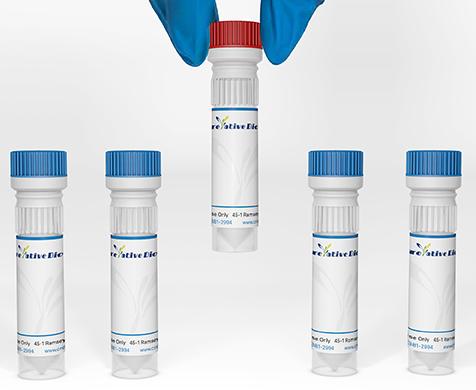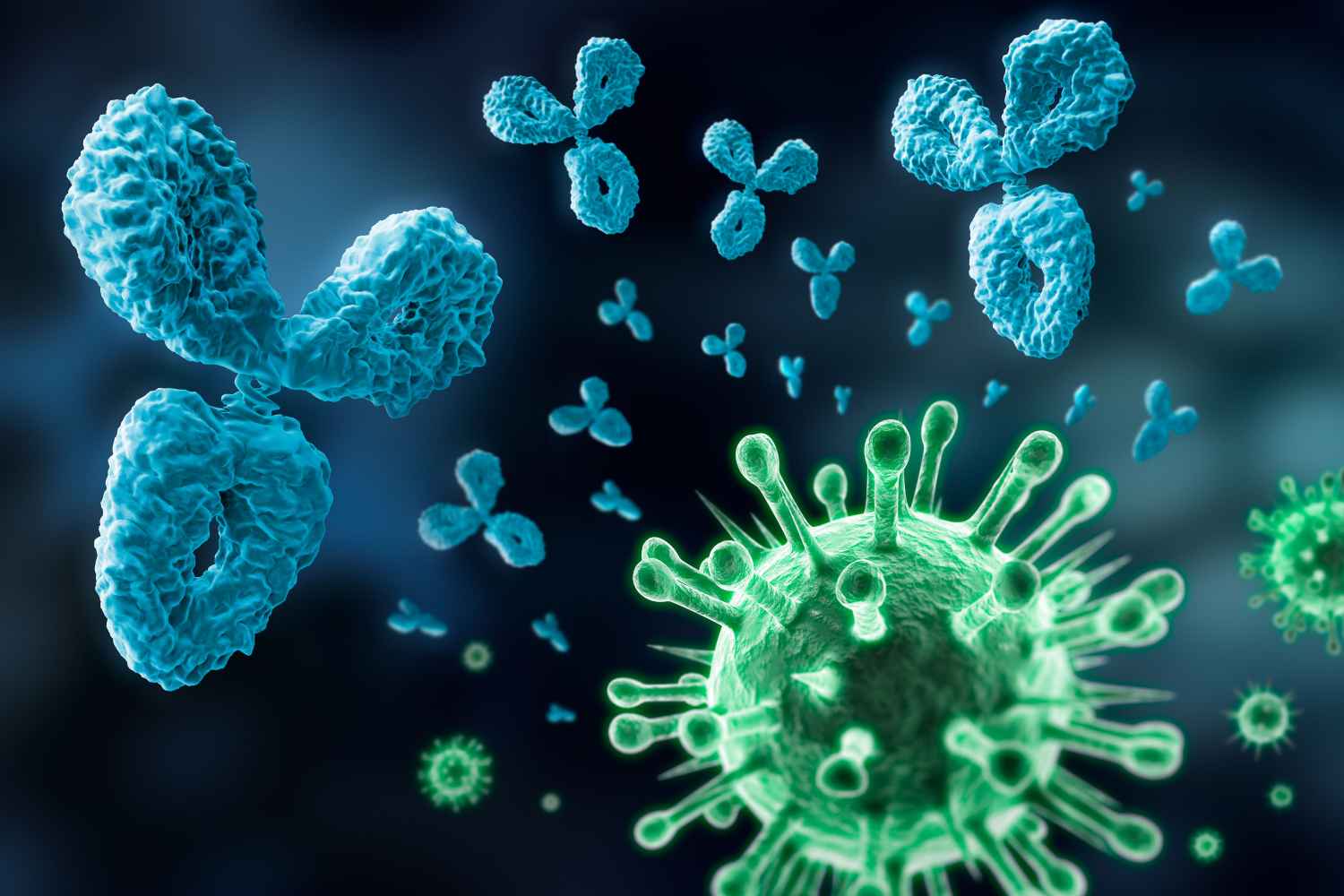CD68 Antibodies
Background
CD68 is a lysosome-associated membrane protein mainly expressed in the mononuclear-macrophage system and belongs to the scavenger receptor family. This protein participates in the transport and phagocytosis processes of the intracellular membrane through its unique LAMP-like domain and plays an important role in antigen presentation and inflammatory responses. As a specific marker of macrophages, CD68 exhibits a characteristic high expression pattern on tumor-associated macrophages in the tumor microenvironment, making it an important target for tumor immunology research. Since its identification in 1991, the discovery of CD68 has provided an important tool for studying macrophage heterogeneity and its role in diseases, and has significant application value in the fields of immunohistochemical diagnosis and immunotherapy.
Structure of CD68
CD68 is a lysosome-associated membrane glycoprotein with a molecular weight of approximately 110kDa, and its molecular weight varies among different species. The following is a comparison of the molecular characteristics of CD68 in common species:
| Species | Human | Mice | Rats | Pigs | Bovine |
| Molecular Weight (kDa) | 110 | 105 | 108 | 112 | 109 |
| Primary Structural Differences | Contains LAMP-like domains | Slightly less glycosylation sites | Transmembrane region conserved | Modify different sugar chains | High homology with human |
The CD68 protein is composed of approximately 300 amino acids, and its primary structure contains a characteristic lysosome-associated membrane protein (LAMP) domain. This protein has a typical type II transmembrane structure, including a short N-terminal cytoplasmic tail region, a single transmembrane region, and a large C-terminal intracavitary domain. The intracavitary region of CD68 contains multiple glycosylation sites, which endows it with high specificity in immunohistochemical detection. This protein mediates its stable expression on the lysosomal membrane of macrophages through its lysosomal localization sequence (LYS), a characteristic that makes it a specific marker of macrophages.
 Fig. 1 Schematic representations of the CD68 gene1
Fig. 1 Schematic representations of the CD68 gene1
Key structural properties of CD68:
- A typical type II transmembrane protein structure
- Contains characteristic domains of LAMP family
- Highly glycosylated intracavitary region
- Lysosomal localization signaling mediates its specific distribution in macrophages
Functions of CD68
The main function of CD68 is to serve as a marker of macrophages and a lysosomal membrane protein, while also participating in multiple immune regulatory processes. The following are the main functions of CD68 and their descriptions:
| Function | Description |
| Macrophage markers | Specific expression in macrophages surface, which is the gold standard by macrophages. |
| Antigen presentation | Participate in MHC class II molecules mediated process of antigen presenting connection inherent immunity and adaptive immunity. |
| Inflammatory regulation | Expression in the inflammatory response, involved in the secretion of proinflammatory factor and inflammatory microenvironment. |
| Phagocytosis | As a scavenger receptor, it recognizes and endocytoses modified LDL, bacteria and other foreign substances. |
| Regulation of the tumor microenvironment | Highly expressed in tumor-associated macrophages, it affects tumor immune escape and angiogenesis. |
The expression level of CD68 is closely related to the activation status of macrophages. Its upregulation usually indicates the activation of M2-type macrophages and plays an important role in chronic inflammation, atherosclerosis and tumor development. Unlike common membrane proteins, CD68 is mainly located on the lysosomal membrane. This characteristic makes it a specific marker for studying the lysosomal function of macrophages.
Applications of CD68 and CD68 Antibody in Literature
1. Harris, Jonathan A., et al. "CD163 versus CD68 in tumor associated macrophages of classical Hodgkin lymphoma." Diagnostic pathology 7 (2012): 1-6.https://doi.org/10.1186/1746-1596-7-12
This study compared the expression of CD68 and CD163 in classical Hodgkin's lymphoma and found that CD68 was more expressed in tumor nodules but had stronger background staining, while CD163 had better specificity and was a superior tumor-associated macrophage marker. However, neither of them was significantly correlated with the recurrence of the disease.
2. Zhang, Jingwei, et al. "Role of CD68 in tumor immunity and prognosis prediction in pan-cancer." Scientific reports 12.1 (2022): 7844. https://doi.org/10.1038/s41598-022-11503-2
Research has found that CD68 is highly expressed in various tumors and is associated with poor prognoses such as glioblastoma and clear cell renal cell carcinoma, but it has a better prognosis in chromophobe renal cell carcinoma. High expression of CD68 affects immune infiltration and drug response, and may become a new target for immunotherapy.
3. Pelekanou, Vasiliki, et al. "CD68, CD163, and matrix metalloproteinase 9 (MMP-9) co-localization in breast tumor microenvironment predicts survival differently in ER-positive and-negative cancers." Breast Cancer Research 20 (2018): 1-10. https://doi.org/10.1186/s13058-018-1076-x
Research has found that high expression of CD68 is associated with a poorer prognosis in ER-negative breast cancer patients, while high expression of CD163 indicates improved survival in ER-negative patients. TAMs of CD68+/CD163+/MMP-9+ are significantly associated with poor prognosis in ER-positive breast cancer and may become a new direction for targeted therapy.
4. Möller, Alexander, et al. "The roles of toll-like receptor 4, CD33, CD68, CD69, or CD147/EMMPRIN for monocyte activation by the DAMP S100A8/S100A9." Frontiers in Immunology 14 (2023): 1110185. https://doi.org/10.3389/fimmu.2023.1110185
Research has found that in the monocyte inflammatory response induced by S100A8/A9, TLR4 is a key receptor, while the knockout of surface receptors such as CD68 does not affect cytokine release. CD68 is not the main target of the inflammatory response mediated by the S100 protein.
5. Song, Li, Carolyn Lee, and Christian Schindler. "Deletion of the murine scavenger receptor CD68 [S]." Journal of lipid research 52.8 (2011): 1542-1550. https://doi.org/10.1194/jlr.M015412
The article indicates that CD68, as a member of the scavenger receptor family, knockout experiments show that it is not a key mediator for the uptake of oxidized low-density lipoprotein, but it may negatively regulate the function of antigen-presenting cells and affect the MHC-II molecule presentation pathway.
Creative Biolabs: CD68 Antibodies for Research
Creative Biolabs specializes in the production of high-quality CD68 antibodies for research and industrial applications. Our portfolio includes monoclonal antibodies tailored for immunofluorescence, Flow Cytometry, Western blot, immunohistochemistry, and other diagnostic methodologies.
- Custom CD68 Antibody Development: Tailor-made solutions to meet specific research requirements.
- Bulk Production: Large-scale antibody manufacturing for industry partners.
- Technical Support: Expert consultation for protocol optimization and troubleshooting.
- Aliquoting Services: Conveniently sized aliquots for long-term storage and consistent experimental outcomes.
For more details on our CD68 antibodies, custom preparations, or technical support, please contact us.
Reference
- O'Reilly, Dawn, and David R. Greaves. "Cell-type-specific expression of the human CD68 gene is associated with changes in Pol II phosphorylation and short-range intrachromosomal gene looping." Genomics 90.3 (2007): 407-415. https://doi.org/10.1016/j.ygeno.2007.04.010
Anti-CD68 antibodies
 Loading...
Loading...
Hot products 
-
Mouse Anti-BIRC7 Recombinant Antibody (88C570) (CBMAB-L0261-YJ)

-
Mouse Anti-ANXA7 Recombinant Antibody (A-1) (CBMAB-A2941-YC)

-
Mouse Anti-AQP2 Recombinant Antibody (E-2) (CBMAB-A3358-YC)

-
Mouse Anti-EIF4G1 Recombinant Antibody (2A9) (CBMAB-A2544-LY)

-
Mouse Anti-DDC Recombinant Antibody (8E8) (CBMAB-0992-YC)

-
Mouse Anti-BIRC3 Recombinant Antibody (315304) (CBMAB-1214-CN)

-
Mouse Anti-CARTPT Recombinant Antibody (113612) (CBMAB-C2450-LY)

-
Mouse Anti-dsRNA Recombinant Antibody (2) (CBMAB-D1807-YC)

-
Mouse Anti-CALR Recombinant Antibody (CBFYC-0763) (CBMAB-C0818-FY)

-
Mouse Anti-APOE Recombinant Antibody (A1) (CBMAB-0078CQ)

-
Rabbit Anti-CCL5 Recombinant Antibody (R0437) (CBMAB-R0437-CN)

-
Mouse Anti-ADRB2 Recombinant Antibody (V2-180026) (CBMAB-A1420-YC)

-
Mouse Anti-ASB9 Recombinant Antibody (1D8) (CBMAB-A0529-LY)

-
Mouse Anti-BZLF1 Recombinant Antibody (BZ.1) (CBMAB-AP705LY)

-
Mouse Anti-ASH1L Monoclonal Antibody (ASH5H03) (CBMAB-1372-YC)

-
Mouse Anti-BRD3 Recombinant Antibody (CBYY-0801) (CBMAB-0804-YY)

-
Mouse Anti-BLK Recombinant Antibody (CBYY-0618) (CBMAB-0621-YY)

-
Mouse Anti-CASP7 Recombinant Antibody (10-01-62) (CBMAB-C2005-LY)

-
Rabbit Anti-ALDOA Recombinant Antibody (D73H4) (CBMAB-A2314-YC)

-
Mouse Anti-C1QC Recombinant Antibody (CBFYC-0600) (CBMAB-C0654-FY)

- AActivation
- AGAgonist
- APApoptosis
- BBlocking
- BABioassay
- BIBioimaging
- CImmunohistochemistry-Frozen Sections
- CIChromatin Immunoprecipitation
- CTCytotoxicity
- CSCostimulation
- DDepletion
- DBDot Blot
- EELISA
- ECELISA(Cap)
- EDELISA(Det)
- ESELISpot
- EMElectron Microscopy
- FFlow Cytometry
- FNFunction Assay
- GSGel Supershift
- IInhibition
- IAEnzyme Immunoassay
- ICImmunocytochemistry
- IDImmunodiffusion
- IEImmunoelectrophoresis
- IFImmunofluorescence
- IGImmunochromatography
- IHImmunohistochemistry
- IMImmunomicroscopy
- IOImmunoassay
- IPImmunoprecipitation
- ISIntracellular Staining for Flow Cytometry
- LALuminex Assay
- LFLateral Flow Immunoassay
- MMicroarray
- MCMass Cytometry/CyTOF
- MDMeDIP
- MSElectrophoretic Mobility Shift Assay
- NNeutralization
- PImmunohistologyp-Paraffin Sections
- PAPeptide Array
- PEPeptide ELISA
- PLProximity Ligation Assay
- RRadioimmunoassay
- SStimulation
- SESandwich ELISA
- SHIn situ hybridization
- TCTissue Culture
- WBWestern Blot






